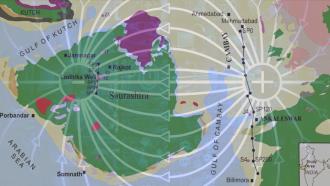
A beached whale’s gut filled with hundreds of pieces of plastic or photos of sea turtles feeding on plastic bags and straws is not uncommon today. The deepest point on Earth, the Mariana Trench, is also not spared of plastic pollution. However, from where does all this plastic come into our oceans? It starts with our homes! Poorly managed plastic waste from drains, bins and landfills often end up in rivers and eventually in seas and oceans.
Now, a study by researchers from the Indian Institute of Technology, Dhanbad, has estimated the generation of different types of plastic wastes by different socio-economic groups in the city of Dhanbad, India. Dhanbad, also known as the coal capital of India, is the second most populated city in the state of Jharkhand. In the current study, published in the journal Waste Management, the researchers have also estimated the possible revenue from the informal recycling done in the city.
The study used both questionnaire surveys and household waste sampling from randomly selected houses in the city to collect data. The researchers then built machine learning models to estimate the plastic waste collected.
“A personal interview conducted with the active scrap dealers in the study area revealed that approximately 4 tons per day of plastic waste is recovered by the informal recycler and the rest goes to the dumpsites or remains unattended”, say the authors.
In this study, the researchers categorised households into three different socioeconomic groups based on education and occupation of the head of the family, family income and type of house. They found that homes belonging to a higher socioeconomic group were responsible for the highest waste generation rates with 51 grams per capita each day (g/c/d). On the contrary, the lower socioeconomic group were responsible for the least with 8 g/c/d.
In all the households, polyethylene terephthalate (PET) products such as water/juice bottles, food and pickle jars, plastics films, sheets, etc and high density polyethylene (HDPE) products such as shopping bags, food containers, bottles, plastic toys, milk pouches, detergent bags and metalized pouches were the most common waste.
A significant portion of the plastic waste processing in India, such as collection and recycling, takes place informally by waste pickers, scavengers and itinerant waste buyers who sell their scavenged items to scrap dealers. These sorted wastes are sold by exporters to respective recycling and manufacturing industries to make new products. Informal recyclers not only earn revenue through this but also reduce the waste thrown out. This study also estimated the plastic waste collected and revenue generated by informal recyclers from recycling these wastes.
The researchers found that a waste picker, could recover an average of 19 kg of plastic each day and earn about ₹130 by selling the recovered plastic waste, most of it being PET and HDPE types of plastic wastes. A large scrap dealer, on the other hand, recovers about 650 kg and earns ₹1300 per day.
While reducing the use of single-use plastics, like plastic bags, straws, or coffee cups can make a difference, recycling can take it further. With the rise of waste management companies like Saahas Zero Waste and Kabadiwalla Connect, which provide platforms for consumers and recyclers to reduce and recover plastic waste, there is hope of plastic waste being effectively managed in India. The coming together of private and government organisations, policies, environmentalists and concerned citizens towards reducing, reusing and recycling plastic can change the future for the better.
India is one of the fastest growing plastic markets in the world and currently uses 12 million tonnes of plastic products each year. The study shows the potential revenue from plastic waste that we throw out every day. Surely, there is more in the trash than what meets the eye!






